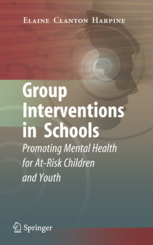The student mentioned above had failed for four years before entering my reading program. He is making progress but still working on catching up. Some students who fail three years or more can overcome such failure in one year. We have had students move up four grade levels in just one year at the reading clinic. Other students need more time. So, the first thing every parent, teacher, and/or tutor must realize is that every student is different, has a different set of reading needs, and learns in a different way. I recently featured a blog series on the 12 different teaching methods that we use at the reading clinic. I encourage you to review those 12 teaching methods. Using a variety of teaching methods gives every student a chance to learn. When we only use one teaching method, we are sentencing many students to failure. I do not expect the schools to start using a more effective method for teaching reading this fall. Teachers are locked into teaching whatever administrators and policy dictate. I’ve had several teachers say that they wish they could use my vowel clustering method, but it’s not allowed.
Even if the schools are locked into using a failing whole language approach for teaching reading, parents, tutors, and yes, even teachers can use vowel clustering and help children and teenagers learn to read (Foorman et al, 2015). I am working on a new book, Why Can’t We Teach Children to Read? Oh, but Wait, We Can. And yes, we can, my reading clinic has nine years of data showing that we can take failing students and return them to the classroom at or above their age level in reading. No, the new book will not be ready for fall 2018, but if you need help, An older book on vowel clustering is available. In the meantime, I am starting a new blog series on vowel clustering to help parents, tutors, and teachers work with students who are struggling with reading.
The first principle is that letters represent sounds. The brain focuses on letter sounds (Moreau, 2015). There are 26 letters in the alphabet and 40 different letter sounds (phonemes). These letter sounds are made through 250 different letter combinations or spellings. Quite simply, our letter sounds, pronunciation of words, and spelling of words are confusing.
We read mostly using the lowercase alphabet. Therefore, students must be able to recognize the lowercase letters and know the sound(s) those letters represent. Because the vowels—a, e, i, o, u, and sometimes y represent so many different sounds, they present the hardest part of learning to read.
Vowels are also the central factor in how a word is pronounced. For example, the simple letter a uses seven different letter sounds but 22 different letter combinations to make those sounds. If you’re using phonics rules, you lose most children who struggle when you introduce irregular vowel sounds. If you are strictly using whole language and memorization of word lists, you lose many struggling students if they cannot memorize. Vowel clustering does not require memorization, does not have any rules to memorize or learn, and does not limit itself to learning a list of words each week. Vowel clustering teaches how to break words down into letter sounds and then put those sounds back together to pronounce or read the words.
Start with the word at. See how many words the student can build from the base word at: at, bat, cat, fat, hat, mat, sat, that, vat. Keep the sound constant—the at sound. : If the student is ready to advance, then begin building multisyllable and compound words that use the at sound: atom. cattle, atmosphere atom. cattle. Be careful, do not advance too quickly. A student who cannot read cat is not ready to tackle cattle.
The important principle is to not change the vowel sound. Teach one vowel sound at a time. We are training the brain to recognize, hear, and read the at sound. So, you must only use the at sound. You cannot throw in the word apple or cab. Yes, they use the short a sound, but we must train the brain to letter sounds, one sound at a time, and one letter combination at a time. Once the student has learned the at sound, then study words with ab for cab or ap for apple or an for ant. Each of these sounds uses the short a sound. Do not mix sounds. There are 7 sounds for the letter a. If you need help, contact me.
Word lists and phonics rules do not teach letter sounds (Foorman et al., 2003), and children who cannot memorize word lists cannot memorize phonics rules (Shaywitz, 2003). I have worked with children from the Bronx to the projects in Chicago. Yes, every child can learn to read, and we can teach the children and teens who are now failing. Poverty is not a deterrent if we use the correct teaching method, but we must change how we teach children and teens to read. Vowel clustering is a new method that has been tested and proven to work. If you have questions, contact me by clicking the email button (envelope) at the top right corner of this page.
If you're interested, my book Group Interventions in Schools: Promoting Mental Health for at-Risk Children and Youth talks about the mental health effects of reading failure.

 RSS Feed
RSS Feed
